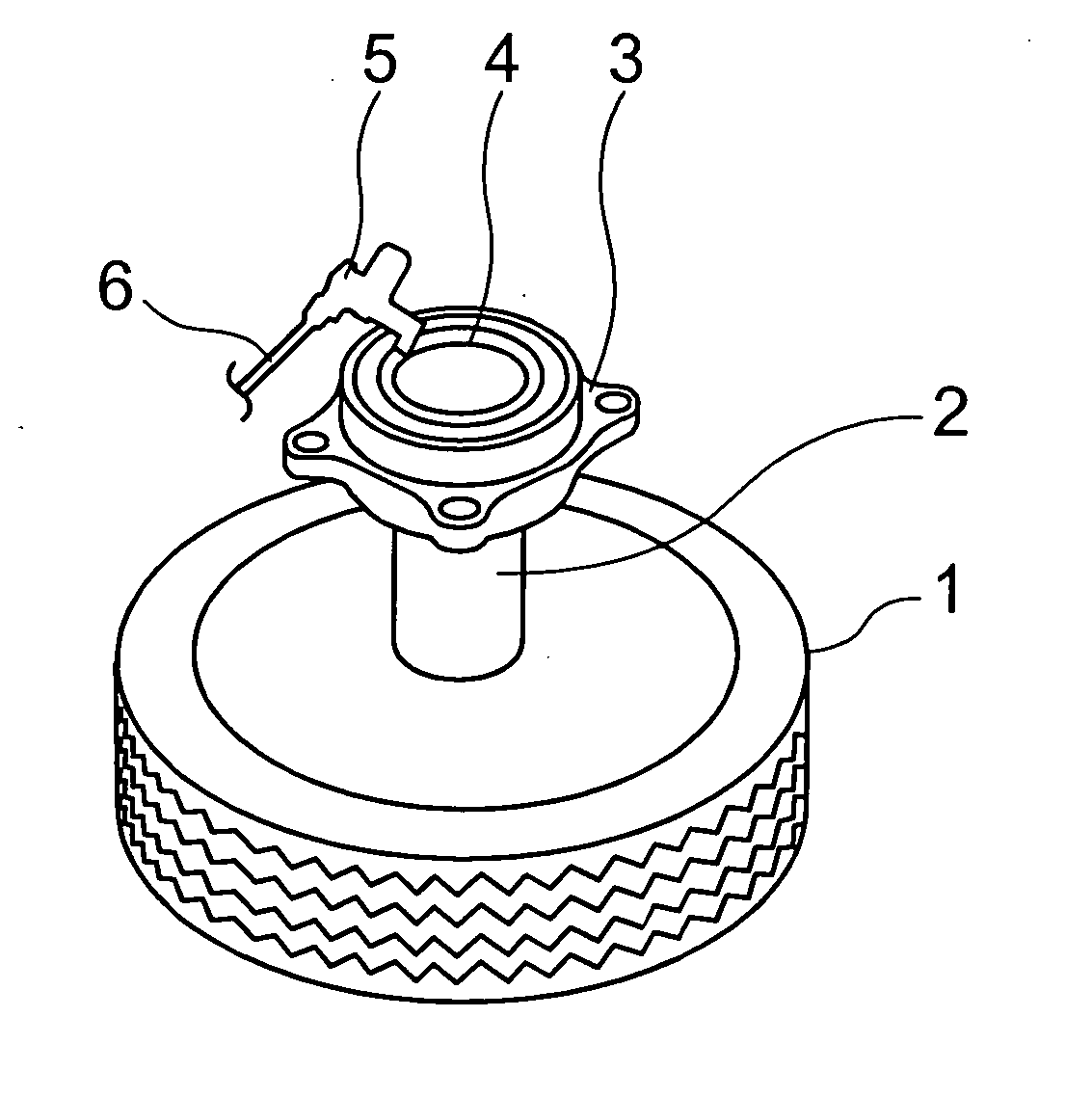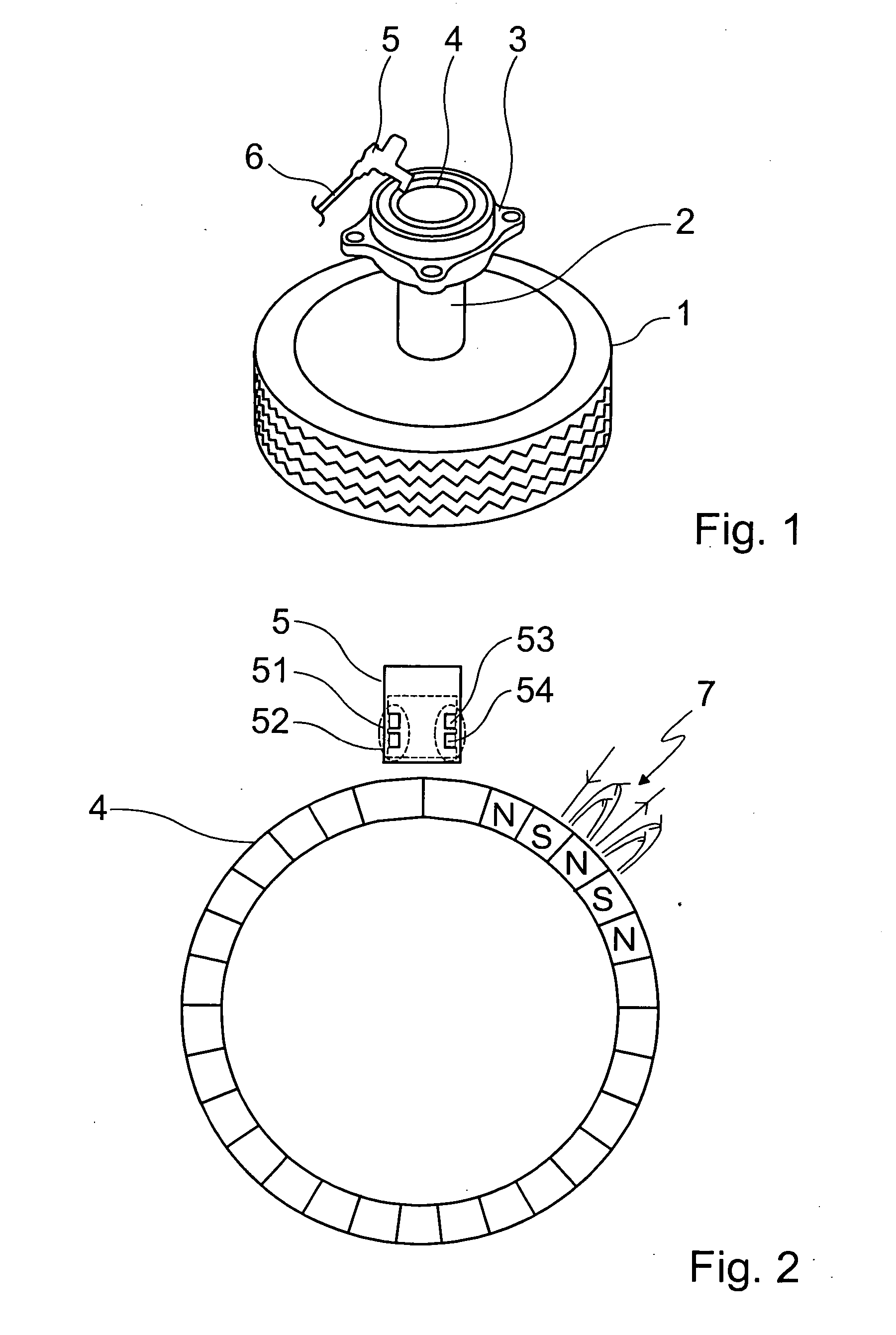Device for detecting the rotational speed and/or the position of a rotating component
a technology of rotating components and detectors, which is applied in the direction of measuring devices, speed/acceleration/shock measurement, instruments, etc., can solve the problems of high electric resistance of the layer system, the application of thin-layer layer sequences requires expensive equipment, and the use of materials exhibiting the cmr effect. , to achieve the effect of reducing costs
- Summary
- Abstract
- Description
- Claims
- Application Information
AI Technical Summary
Benefits of technology
Problems solved by technology
Method used
Image
Examples
Embodiment Construction
[0034]FIG. 1 shows wheel 1 of a vehicle, otherwise not shown in greater detail, connected to axis 2, which leads to a wheel bearing 3. Positioned in the area of wheel bearing 3 is a magnetic pole wheel 4, which is aligned concentrically with axis 2 and wheel 1, respectively, and coacts with magnetic field sensor 5, which is connected via a line 6 to a control unit not shown in greater detail.
[0035] As can be inferred from FIG. 2, pole wheel 4, which represents a magnetic sensor element, is made of alternately positioned magnetic north pole N and south pole S. Representative for the other areas of pole wheel 4, field lines are shown between each adjacent north and south pole for an area 7.
[0036] Magnetic field sensor 5, which coacts with pole wheel 4, is displaced in the radial direction of axis 2 opposite pole wheel 4 and may in practice be at a distance of about 10 mm from the latter, for example. Magnetic field sensor 5 includes four sensor elements 51, 52, 53 and 54, which act ...
PUM
 Login to View More
Login to View More Abstract
Description
Claims
Application Information
 Login to View More
Login to View More - R&D
- Intellectual Property
- Life Sciences
- Materials
- Tech Scout
- Unparalleled Data Quality
- Higher Quality Content
- 60% Fewer Hallucinations
Browse by: Latest US Patents, China's latest patents, Technical Efficacy Thesaurus, Application Domain, Technology Topic, Popular Technical Reports.
© 2025 PatSnap. All rights reserved.Legal|Privacy policy|Modern Slavery Act Transparency Statement|Sitemap|About US| Contact US: help@patsnap.com



